Young children are developmentally attuned to noticing the properties of objects, and the shape and configuration of these objects. Block play is an important way to support children’s knowledge about the direct relationship between the structure of a thing and the way it functions. As children play they explore questions such as: Does the weight of the block matter in building up high? Why do some structures stay up and not fall over? How large does this structure have to be to fit all the cars? Block play has a direct connection to math, science, and engineering as children explore balance, weight, equivalency, spatial relationships, architecture, geometry, pattern, and force and motion. Blocks also offer opportunities for dramatic play scenarios that incorporate the construction of spaces, structures, and real and imaginary worlds.
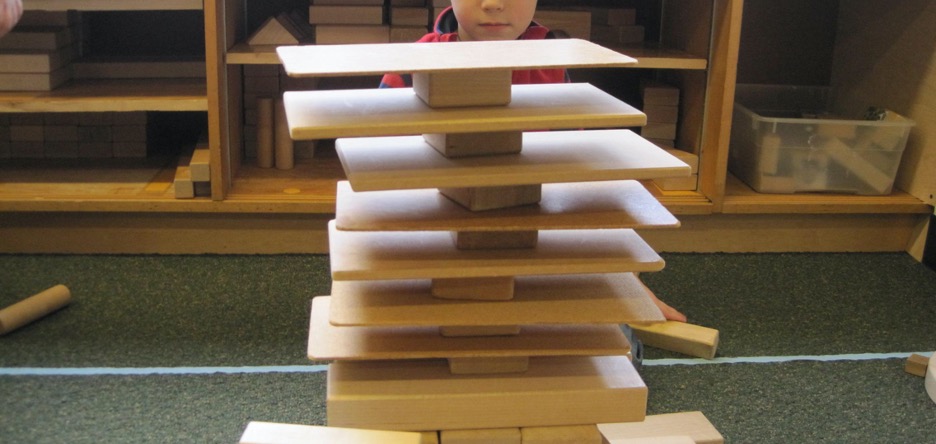
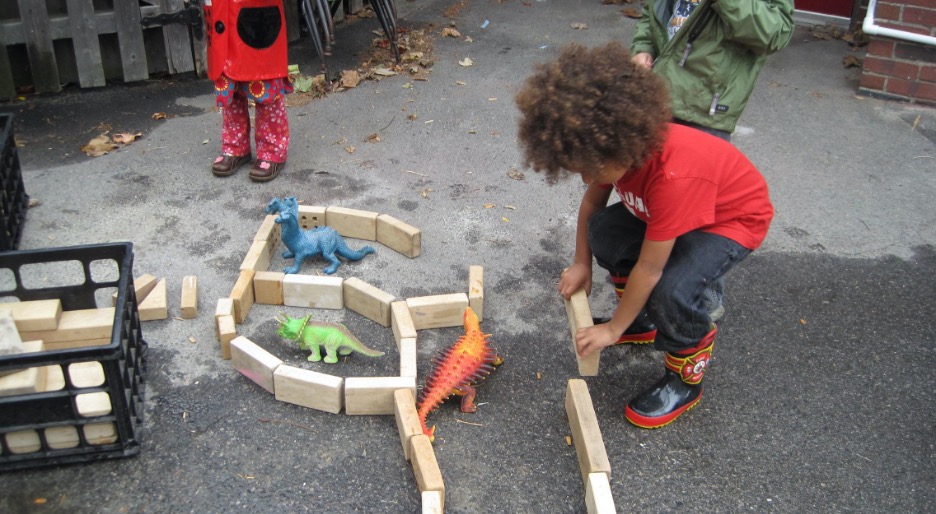
Before the Children Play – Prepare the Block Area:
- Sort blocks into shapes and arrange in groups on the block shelf. Do not store in a bin or bucket.
- Make a cut out of each type of block and put it on the shelf to indicate where each block goes.
- Consider a line of tape in front of the shelf as a “no build” zone so children don’t build right up against the shelf, blocking others from getting blocks.
- Add selected props to promote rich play. Do not offer too many and rotate as children’s interests shift. Could offer animals, people, cars, jewels, loose parts, natural items, etc.
- Hang up pictures of children building or of inspiring structures around the world or in the neighborhood children live in.
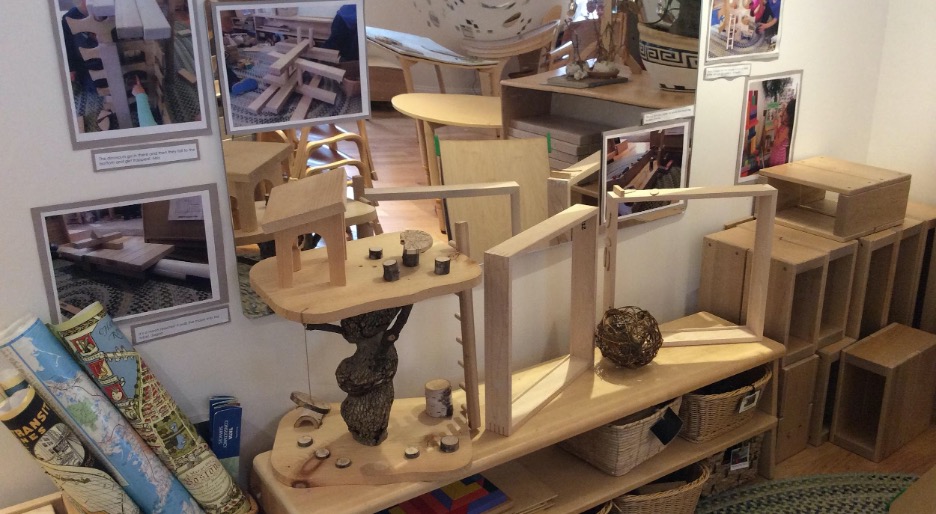
When Children are Ready to Play:
- Gather children in the block area.
- Do a Guided Discovery of the block area. “This is the block area.” “Here is how you take blocks off the shelf.” “Here is how we build carefully.” “This is how we put blocks back on the shelf when we are finished.”
- Later as children explore block play and building, introduce an explicit presentation of specific construction techniques such as how to build tall structures.
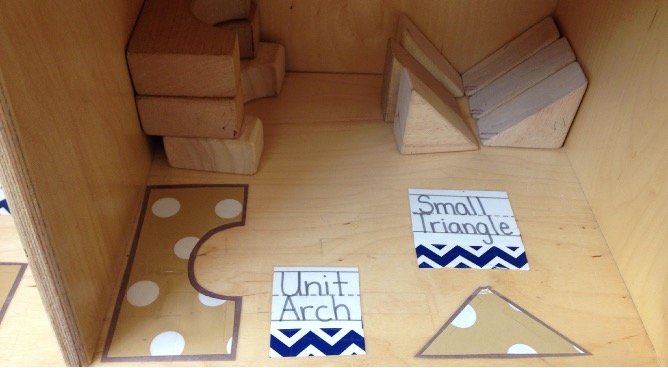
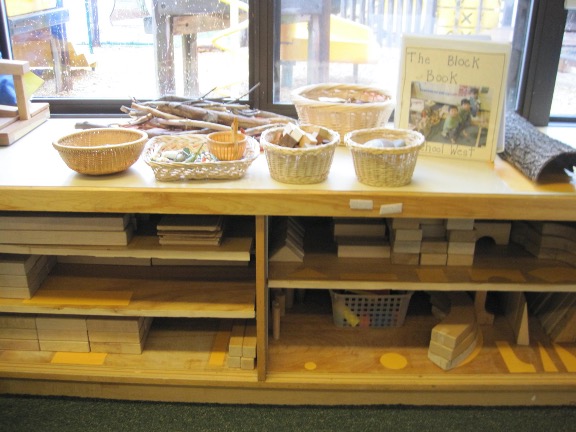
Stages of Block Play:
- Carrying
- Stacking and Making Rows
- Bridging
- Enclosures, Tunnels
- Elaborate Designs
- Complex and Cooperative Building, Planning and Building